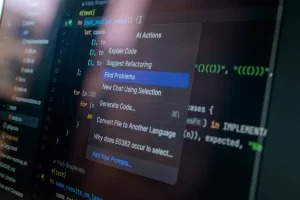Revolutionary AI Models Transform Gaming and Document Management

Artificial Intelligence is leaping forward, crafting full-fledged games and enhancing document handling capabilities. Groundbreaking developments in AI promise to change how we interact with both gaming and work documents.
At the forefront is Oasis, an AI generating games in real-time. Meanwhile, Claude, another AI, upgrades its ability to work with PDFs. These advancements, equipped with speed and precision, signal a new era in technology.
Oasis: Game Creation in Real-Time
Imagine an AI that creates game worlds as rapidly as you can think. Oasis, a novel AI model, does just that, generating Minecraft-style environments in real-time. This model acts like an AI game developer, constructing detailed worlds based on simple instructions.
Powered by Decart’s fast transformer inference engine, Oasis creates environments at a pace unseen before. Operating 100 times faster than existing models, it represents a significant leap in game development technology. Although still in development, its capability is a promising glimpse into the future of gaming.
Claude’s Vision: A New Way to Handle PDFs
Anthropic’s AI assistant, Claude, is enhancing productivity by interpreting and analyzing PDFs with remarkable accuracy. This upgrade allows users to summarize and extract crucial insights from documents.
Claude not only reads text but grasps document layouts, visual elements, and relationships within content. Users can process up to 32MB of data and 100-page documents, handling complex charts and graphs effortlessly. Available on the Claude app and API, this tool is a game-changer for professionals dealing with heavy documentation.
AI Innovation: Beyond Gaming and Documentation
AI’s potential stretches far beyond just gaming and PDFs. New tools are emerging to automate and enhance various tasks, showcasing AI’s versatility.
Sales teams, for example, use AI to handle outreach and follow-ups, allowing more focus on closing deals. These tools enrich leads using data sources like social media, showcasing AI’s ability to impact diverse fields effectively.
The adaptability of AI is impressive. By automating routine tasks, it frees up valuable time for strategic efforts. As more sectors integrate AI, its transformative potential becomes ever clearer.
Protecting Data in AI Applications
AI requires data for its training, raising concerns about privacy and security. Yet, users can take steps to mitigate risks.
Services like ChatGPT allow users to opt out of data sharing processes, enhancing control over personal information. As AI becomes more integrated, understanding and managing data privacy will be crucial.
By toggling data sharing settings, users can protect their information. Being informed about privacy options is key to safely navigating the AI landscape.
Prompts and Creativity in AI
AI also inspires creativity, offering new ways to engage with content creation, such as writing scripts for webinars.
These prompts encourage exploring main topics’ benefits and impacts, demonstrating AI’s role in content strategy. Educators and marketers find these AI-generated prompts invaluable for planning effective content.
AI-generated creativity fosters innovation in both personal and professional spaces. As AI evolves, its influence on content creation will grow significant.
AI in the Visual Arts
AI-generated images, such as those inspired by user prompts, showcase AI’s potential in visual arts. These creations reflect intricate details and ambiance, demonstrating AI’s artistic capability.
With prompts for elements like tennis courts or specific lighting, AI crafts images that captivate audiences. This synergy of creativity and technology opens new horizons for artists.
Exploring various techniques, AI-powered visual art offers fresh perspectives on traditional forms. Its impact on the art world continues to expand, unlocking endless possibilities for creators.
Trust in AI Products Through Standards
Earning customer trust in AI products includes demonstrating compliance with security standards like ISO 42001. Achieving this can be complex but essential for credibility.
Guides exist to streamline obtaining certification, aiding companies in differentiating themselves from competitors. Compliance reassures users of product reliability and security, a necessary step in AI adoption.
Following standard protocols ensures AI products meet user expectations and industry benchmarks. As competition grows, proving adherence to these standards becomes vital for market success.
Enhancing Interaction with AI
AI is transforming how we interact with both digital and physical environments. Features such as voice commands and personalized settings enrich user experience.
From automating daily tasks to offering personalized recommendations, AI creates more meaningful interactions. Its integration into daily life continues to deepen.
The future of AI lies in enhancing these interactions, creating technology that’s intuitive and user-centric. The potential for improved accessibility and personalization is vast, paving the way for more human-like digital experiences.
AI advancements like Oasis and Claude signify a promising leap towards more interactive and efficient tools in various fields. As these technologies evolve, they offer exciting possibilities and improvements.






